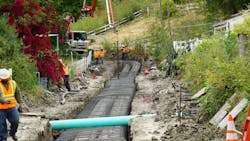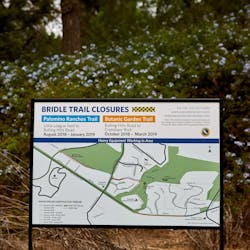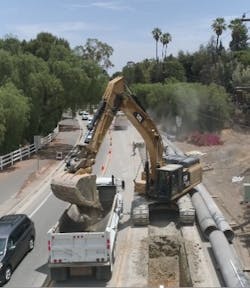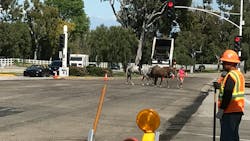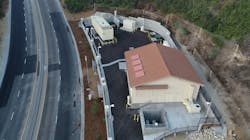Palos Verdes Peninsula Water Reliability | 2022 WWD Top Projects
For 90,000 Palos Verdes Peninsula residents, a single pipe break could have spelled disaster for its drinking water and fire protection.
Varying elevation — as low as sea level and as high as 1,500 feet — storms, fires, and earthquakes could threaten either of the two primary pipes feeding the system or the pumps required for flow. One 55-year-old pipe serves 90 percent of the population while another 60-year-old pipe supports the remaining citizens.
“As California grapples with climate change, earthquakes, and wildfires, this new water infrastructure is helping ensure Peninsula residents and firefighters have the safe, clean water they need, when they need it,” said Martin A. Kropelnicki, Cal Water president and CEO.
Due to the significance of the project to the public interest and the impact it would have on traffic in and out of the peninsula, an emphasis on communication and transparency were vital. City manager for Rolling Hills Estates Greg Grammer said California Water Service, the organization that owns the project, took that goal to heart.
“They engaged the city early on and frequently throughout the project to ensure that all stakeholders were informed about the project, worked collaboratively with stakeholders to address concerns, and delivered on their pledge to return our community to the same or better condition,” Grammer said. “In our experience, the amount of community outreach that was carried out for an infrastructure project was unprecedented. Cal Water was proactive in their communication and dedicated to mitigating impacts to residents and businesses.”
The original concept for the project was devised 20 years prior to completion, although construction began in 2016. In total, the project cost $100 million and used the design-build alternative delivery method to engage all necessary parties for public outreach and project oversight.
At the core of the project was a 7-mile large diameter pipeline using 30-inch and 24-inch pipes in addition to a high capacity pump station. More than half the pipe was constructed outside of the public right-of-way, crossing a horse trail network and private properties, and a necessary portion of the pipeline had to run alongside the primary traffic route on and off the peninsula.
“From project planning through project completion, Cal Water demonstrated its commitment to being a good neighbor to the residents and businesses of Rolling Hills Estates, as well as the other Palos Verdes Peninsula communities,” Grammer said. “Cal Water had to carefully balance the interests of many stakeholders and was able to navigate a complex landscape by executing the project thoughtfully and responsibly, all while being a good community partner - a task that is difficult to achieve. We thank Cal Water for investing in our community and applaud them for getting the recognition they deserve.”
Additional geography posing challenges to the pipeline included old landfill, which required additional special planning, design, construction monitoring and testing; and the County of Los Angeles Botanic Garden, notably close to its rare centerpiece of its collection, the Ear Pod tree. Planning and design for the project in the area ensured the safety and longevity of the tree were not harmed.
“Reliable water service has never been more essential, and we are pleased that this critical upgrade helps the Peninsula be better prepared for the future. We greatly appreciate the cooperation and support of the residents, city officials, and community partners who made this project a success.” said Kropelnicki.
About the Author
Bob Crossen
Bob Crossen is the vice president of content strategy for the Water and Energy Groups of Endeavor Business Media, a division of EndeavorB2B. EB2B publishes WaterWorld, Wastewater Digest and Stormwater Solutions in its water portfolio and publishes Oil & Gas Journal, Offshore Magazine, T&D World, EnergyTech and Microgrid Knowledge in its energy portfolio. Crossen graduated from Illinois State University in Dec. 2011 with a Bachelor of Arts in German and a Bachelor of Arts in Journalism. He worked for Campbell Publications, a weekly newspaper company in rural Illinois outside St. Louis for four years as a reporter and regional editor. Crossen can be reached at [email protected].
